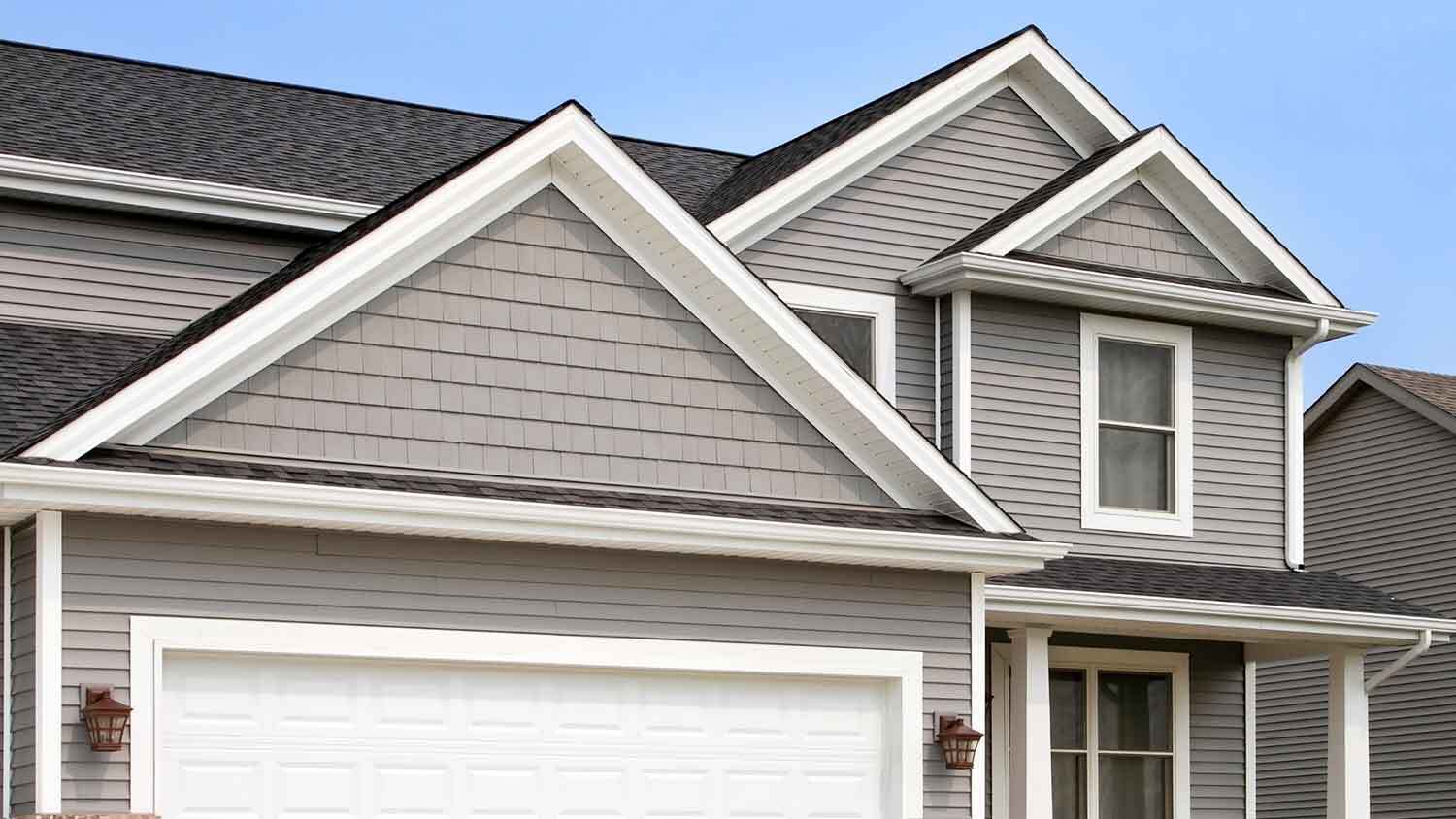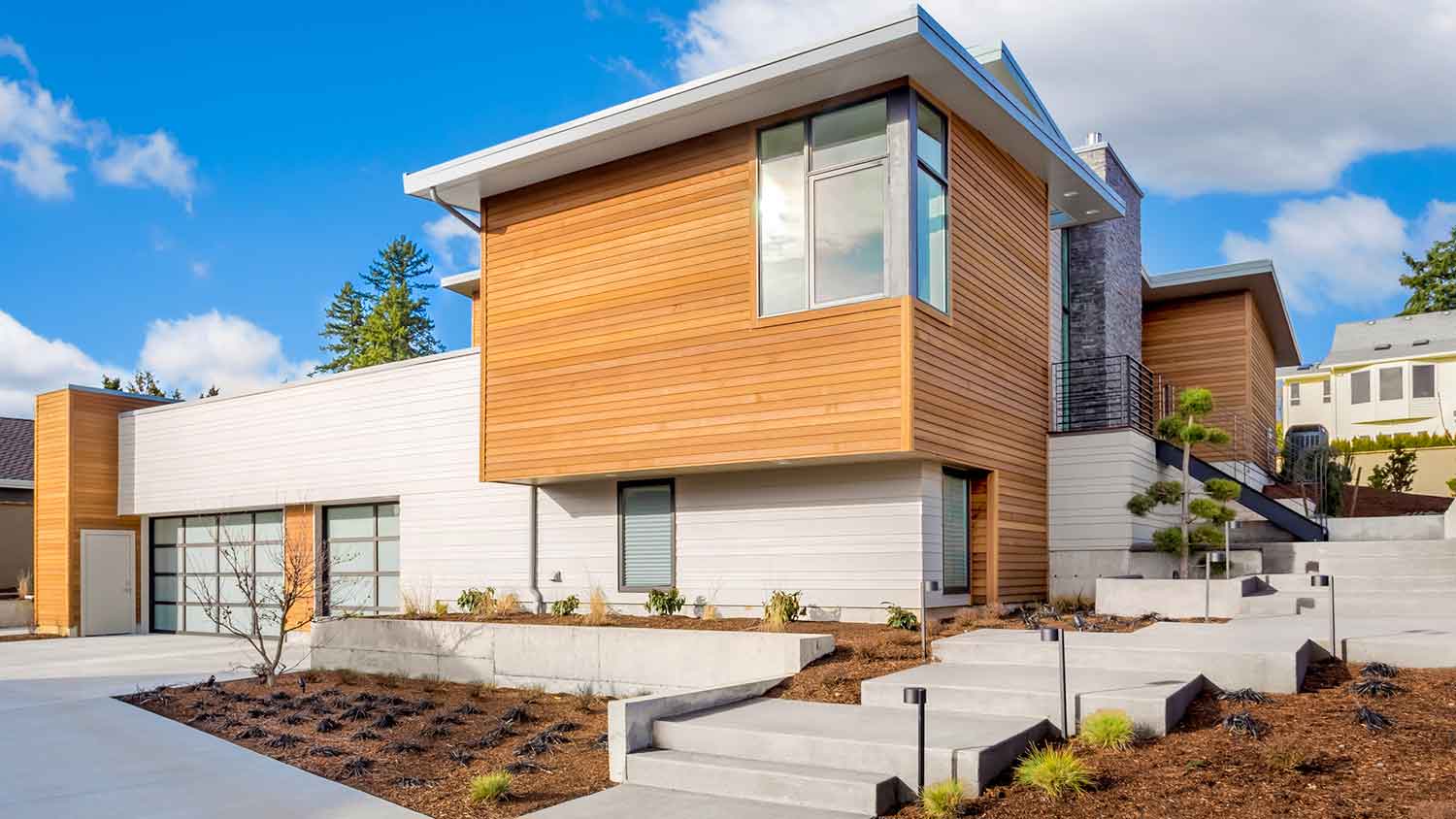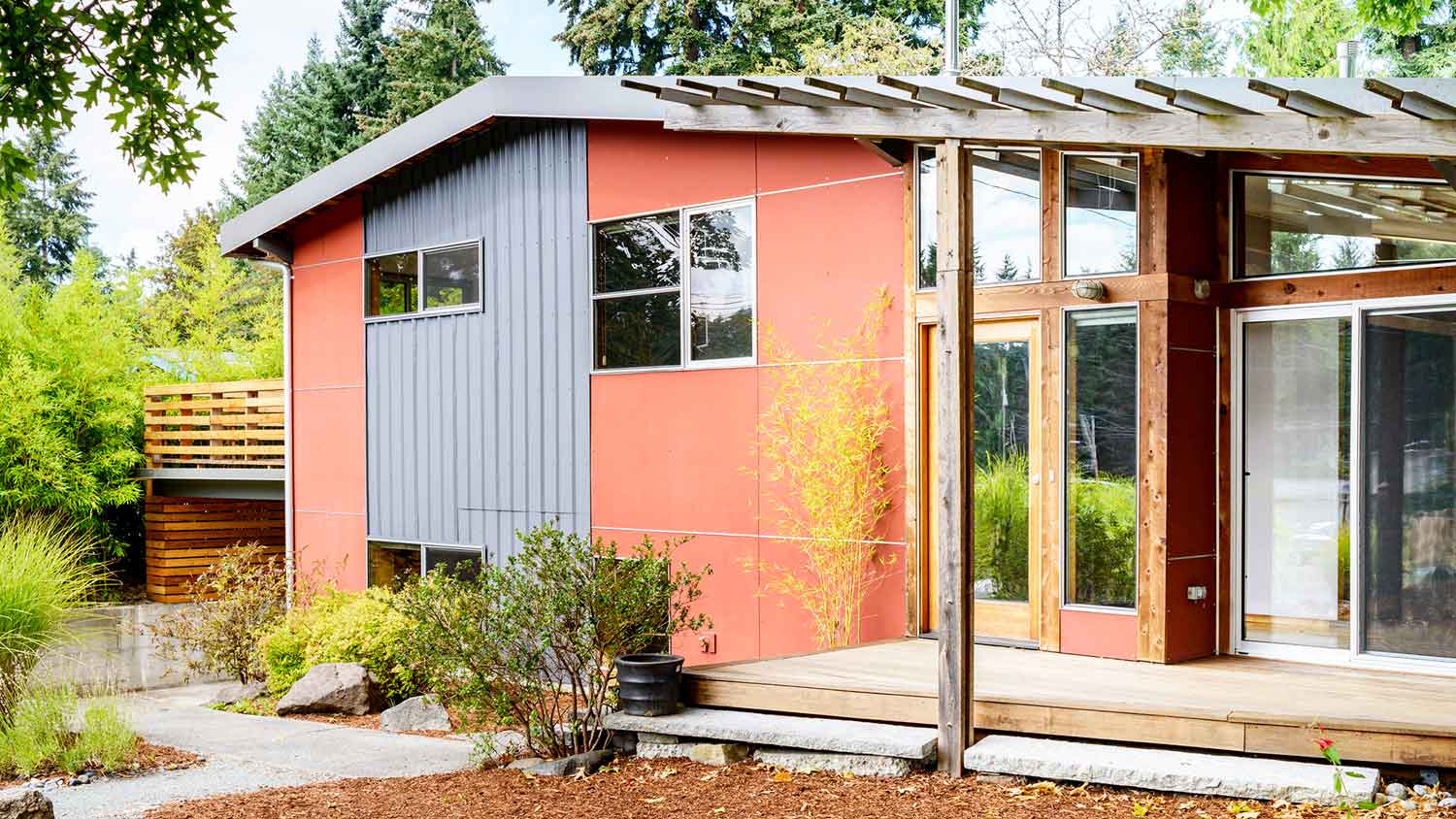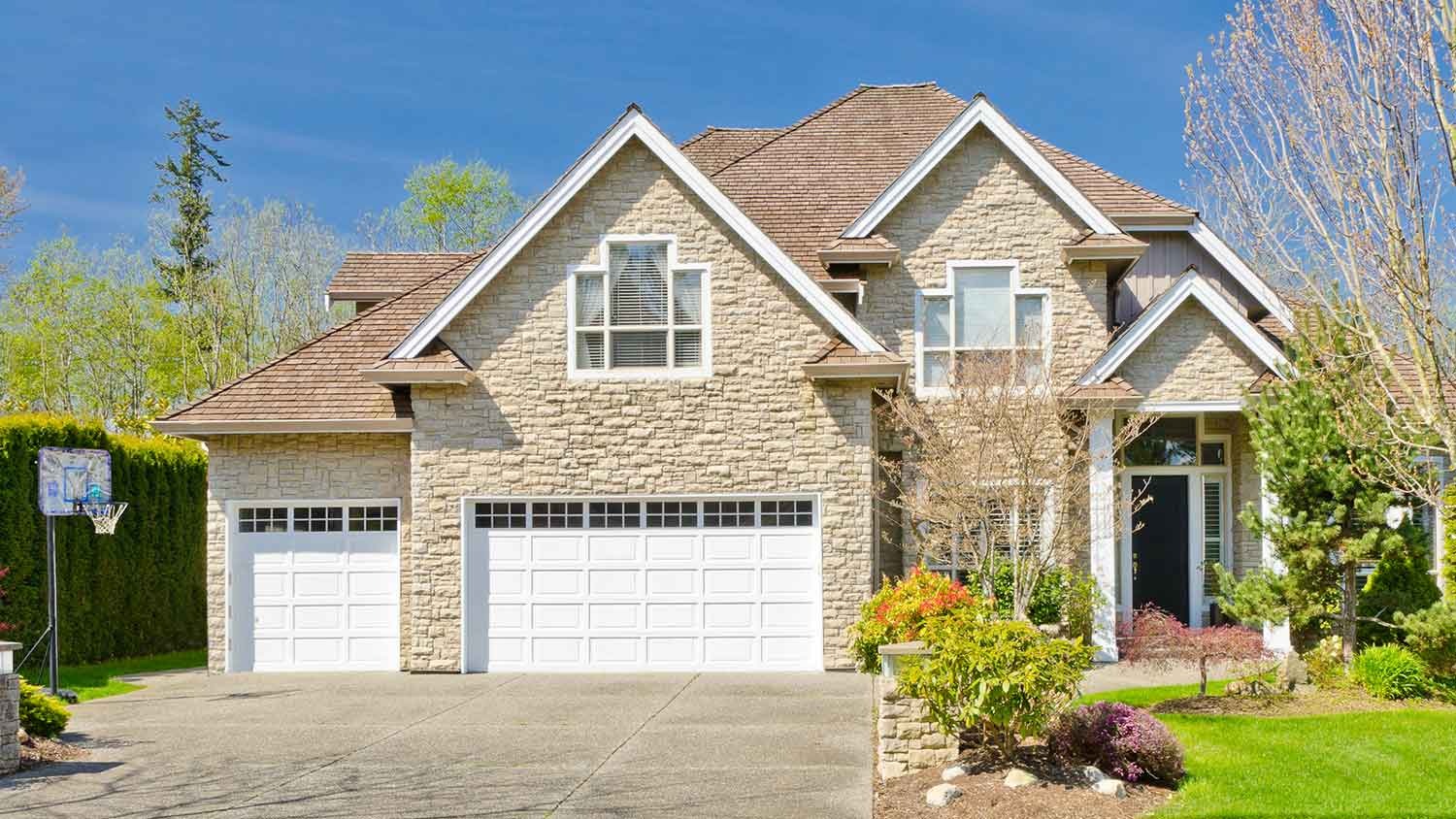
Discover the cost to install exterior trim. Learn about price factors, labor, materials, and ways to save on your exterior trim installation project.
Give your neighbors something to talk about


Vinyl is the most popular siding option, largely due to its affordability, availability, and ease of installation. However, other materials can be more stylish, unique, insulating, or more durable. There are seven vinyl siding alternatives to consider: fiber cement, engineered wood, real wood, aluminum, brick, stone, and stucco. Understanding how each of these compares will help you choose the best siding for your home.

| Siding Material | Cost per Sq. Ft. | Lifespan (years) |
|---|---|---|
| Vinyl | $3–$12 | 30–40 |
| Aluminum | $3–$6 | 20–40 |
| Brick/Brick Veneer | $3–$20 | 50–100+ |
| Engineered wood | $1–$6 | 20–40 |
| Fiber cement | $7–$18 | 30–50 |
| Stone/Stone veneer | $5–$30 | 50–100+ |
| Stucco | $7–$9 | 50–80 |
| Wood | $1–$15 | 20–40 |

Fiber cement siding, sometimes called Hardie board siding, is made from cement, sand, water, and cellulose fibers. Fiber cement siding costs up to 1.5 times as much as vinyl siding, but it lasts longer and is non-combustible, so it’s a good option in areas where wildfires are a risk. Fiber cement siding is also waterproof and requires minimal maintenance, and its color won’t fade as readily as vinyl.
When you choose fiber cement, you have some style options, including shakes, panels for board and batten siding, and planks for lap siding. In all cases, the boards can be textured to resemble real wood or other materials, and they come in a wide variety of colors for customization.
| Pros | Cons |
|---|---|
| Non-combustible | More expensive |
| Long lifespan | Hard to DIY |
| Low-maintenance | Not recyclable |
| More sustainable | Heavy material |
Best for: Homeowners looking for a high-end appearance who have some extra money to spend on siding

Engineered wood siding costs half as much as vinyl, making it one of the most affordable siding materials. It has a shorter lifespan, but it provides more value than vinyl siding due to the low installation cost. This siding material is mostly made from wood fibers and resin, so it is combustible. However, it’s more water resistant than real wood and won’t harbor mold or attract insects. Much like vinyl and fiber cement siding, it’s paintable and available in a variety of colors.
Engineered wood siding is meant to mimic the look of real wood without the risk of rotting and discoloration. It’s available in shakes, planks, and panels, giving you the same style options as many other materials.
| Pros | Cons |
|---|---|
| Moisture resistant | Combustible |
| Very affordable | Shorter lifespan |
| Low-maintenance | Not sustainable |
| High-end appearance | Colors can fade |
Best for: Homeowners who want the most affordable siding material available

Real wood siding varies widely in price, depending on the species you choose, but many moisture-resistant options like redwood and cedar siding are expensive, costing up to 1.5 times as much as vinyl. Wood is a high-maintenance material, so long-term costs are also higher than you’d see with vinyl.
Wood siding has a shorter lifespan than vinyl, especially in areas where moisture and rainfall are common problems. Wood is highly combustible, so you’ll need expensive fireproofing treatments if wildfires are a risk.
Wood siding is available in shakes, planks, and panels, but there’s little customization in terms of color. You can paint wood siding, but you’ll hide some of the natural beauty of the material.
| Pros | Cons |
|---|---|
| Beautiful aesthetic | High-maintenance |
| More sustainable | Often expensive |
| Easy to repair | Highly combustible |
| More insulative | Prone to rot |
Best for: Homeowners looking for a rustic, traditional appearance who don’t live in areas with heavy precipitation or high humidity

On average, aluminum siding costs half as much as vinyl siding. Although it has a shorter lifespan, it costs less over time due to the low installation and siding replacement costs. Aluminum is fireproof and, when installed properly, has similar water and moisture resistance to vinyl. It is available in many colors, and you can paint it for a fresh appearance. However, it’s prone to denting and doesn’t offer the same beauty as some other options, even when newly painted.
Aluminum is an easily malleable material, so you have many options for siding styles. These include shingles, lap siding, board and batten, and custom designs.
| Pros | Cons |
|---|---|
| Very affordable | Shorter lifespan |
| Resists water/fire | Less appealing |
| Highly customizable | Prone to denting |
Best for: An affordable siding solution that stands up well to water, moisture, fire, and pests

Brick siding can cost twice as much as the cost to install vinyl siding unless you go with brick veneer, which costs around the same as vinyl. Brick has an extremely long lifespan, sometimes lasting for 100 years or more, and requires less maintenance than vinyl. As such, it provides far better long-term value than vinyl, even at twice the cost. Brick is fire-resistant, but it absorbs moisture and may not be ideal in areas with heavy precipitation.
Brick and brick veneer siding are popular choices for homeowners looking for a beautiful aesthetic or to boost home energy efficiency. Brick is available in a single color, but you can paint it for some customization. In terms of style, though, the pattern of the laid bricks is the only chance to add some uniqueness to your home.
| Pros | Cons |
|---|---|
| Very long lifespan | Often expensive |
| Beautiful aesthetic | Absorbs moisture |
| Fire-resistant | Few style options |
| More sustainable | Heavy material |
Best for: Achieving a natural, high-end look for your home while also boosting home efficiency

Real stone is one of the most expensive siding materials, sometimes costing 2.5 times as much as vinyl. Stone veneer is a good option if you’re looking for the same luxurious curb appeal while paying about as much as you would for vinyl. It can last for 100 years or more, is fire-resistant, and won’t absorb water as readily as brick. Stone offers some color variation for a natural aesthetic, and while you can paint it, most homeowners prefer the raw stone look.
Just like with brick, you’re limited in siding style when you choose stone. You can only customize the size, color, and arrangement of stones.
| Pros | Cons |
|---|---|
| Very long lifespan | Often expensive |
| High-end appearance | Hard to DIY |
| Fire-resistant | Few style options |
| More sustainable | Heavy material |
Best for: Homeowners with some room in their budget who are looking for a luxurious appearance and outstanding value

Stucco siding is often more expensive than vinyl due to the complicated and labor-intensive installation process, but it lasts twice as long, on average. It’s resistant to pests and fire, and it provides greater insulation than vinyl and can boost home efficiency and indoor comfort. It’s naturally available in earth tones, but it’s easy to paint for some customization. It does absorb water readily, so it’s not ideal in areas where humidity and heavy precipitation are prevalent.
Stucco gives you some options for texture if you hire a siding contractor for the installation, but there’s no variability when it comes to style.
| Pros | Cons |
|---|---|
| Fire-resistant | Hard to DIY |
| Long lifespan | Can crack and chip |
| Sustainable | More maintenance |
| Excellent insulation | Few style options |
Best for: Homeowners in hot climates who want to boost home energy efficiency or want a more sustainable option than vinyl
Choosing the right type of siding means considering a few key factors, like budget, maintenance, and the climate in your area.
First, you should consider your budget. Vinyl is popular for its affordability, so if cost is your most important factor, but you want a vinyl siding alternative, then engineered wood, stucco, brick or stone veneer, and aluminum are good options. They’re similar in up-front cost to vinyl.
You should consider long-term value, too. Vinyl siding lasts for 20 to 40 years with minimal maintenance, but options like stucco, stone, brick, and fiber cement all provide lower long-term costs due to less maintenance and longer lifespans.
New siding boosts your home value and curb appeal, so the look of your new siding is a key thing to think about. Stone and brick are considered the most appealing siding options, while aluminum and engineered wood are less visually appealing. Fiber cement siding is a good middle ground when it comes to balancing appearance and cost.
Think about customization options, too. It’s a good idea to adhere to neighborhood trends for the highest ROI, but siding materials like fiber cement, wood, and aluminum give you more room to customize when it comes to style.
Finally, think about the durability and insulating properties of your siding. Stone, brick, and fiber cement will all stand up to extreme weather better than vinyl. If you live in a moderate climate, stucco and fiber cement can both outlast vinyl. In hot or cold climates, the insulating value of your siding may be an important consideration, too. Stucco, stone, and brick all provide better insulation and can reduce heating and cooling costs when compared to vinyl. A siding contractor near you can help you determine what’s best in your particular area.
From average costs to expert advice, get all the answers you need to get your job done.

Discover the cost to install exterior trim. Learn about price factors, labor, materials, and ways to save on your exterior trim installation project.

Wood siding repair costs depend on the size, material, repair type, and more. Keep reading to learn more about siding repair budgeting.

Cedar siding is expensive, but it’s beautiful, timeless, and adds insulation to your home. Use this cedar siding cost guide to see what your project will total.

Knowing whether to install windows or siding first can save you time and money on your renovations. Here’s everything you need to know before you get started.

Learn more about the best types of cement siding and their benefits for your home.

If you’re considering adding vinyl siding to your home, you may wonder: How long does vinyl siding last? Learn everything you need to know in this guide.